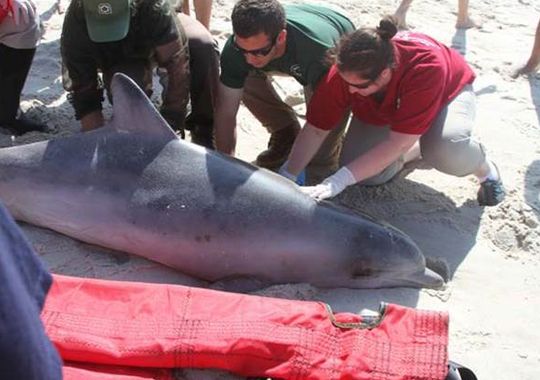Ebola of the Sea? Dolphins Still Dying Off Coast
By: Lindsay McNamara, Communications Coordinator

Bottlenose Dolphins, their numbers impacted last year from a nasty virus that rivals the death rate of Ebola in West Africa, are still dying, researchers have found.
The outbreak of morbillivirus, a measles-like virus that causes pneumonia, skin lesions and brain infections, has killed roughly twice as many bottlenose dolphins as the last big outbreak in 1987-88. In New Jersey, 151 bottlenose dolphins died last year — nearly 10 times this year’s toll so far, according to the Marine Mammal Stranding Center in Brigantine.
Morbillivirus is highly contagious. It’s spread through respiration (via blowholes) and direct contact. Experts think the virus may also be spread through skin contact.
Asbury Park Press Reporter Todd B. Bates explores the unusual mortality event:
Learn more:
- Explore Conserve Wildlife Foundation’s plans to protect marine mammals in New Jersey.
- Read Executive Director David Wheeler’s blog on the dolphin die-off from May 2014.
- Ask the Experts: NOAA’s Mendy Garron Sheds Light on Bottlenose Dolphin Die-off (May 2014).
Lindsay McNamara is the Communications Coordinator for Conserve Wildlife Foundation of New Jersey.
